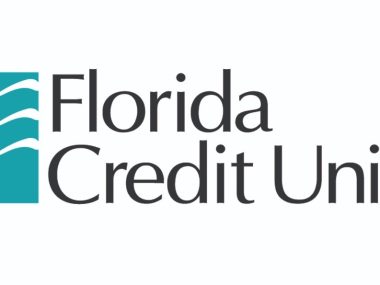In today’s uncertain economic climate, the concept of an emergency fund is not just smart financial planning; it’s a lifesaving financial buffer. How to Build an Emergency Fund is a question that resonates with many, and the journey to answering it requires understanding, strategy, and dedication.
It’s about preparing for the unexpected and ensuring you and your family’s financial stability in the face of life’s unforeseen challenges. Get ready to discover the importance of this financial lifeline and learn practical steps to create one of your own.
What Is An Emergency Fund?
An emergency fund serves as your financial guardian angel, swooping in to save the day during life’s unpredicted financial dilemmas. It is a stash of money set aside specifically for unplanned, urgent financial needs.
Starting with a clear understanding of what constitutes an emergency fund is the critical first step towards cultivating a safety net that stands strong against financial storms.
Fully Accessible and Unaffected by Market Risks: Unlike investments subjected to the ebbs and flows of the stock market or retirement accounts laden with penalties for early withdrawal, your emergency fund is all about liquidity and stability. Its primary home should be in a savings account that is not tied up in risky ventures.
Living Expenses Coverage: Experts like financial advisors often shine a spotlight on the need for this fund to cover three to six months’ worth of living expenses, forming a resilient buffer against the tides of change in our daily lives.
Antidote to the Debt Spiral: By establishing an emergency fund, you can combat potential debt that might accrue during tough times, embodying the ounce of prevention that’s worth a pound of cure.
Building an emergency fund isn’t a luxury; it’s a fundamental building block in achieving financial peace of mind. Through consistent saving and prudent financial planning, you can craft this critical tool and prevent a raindrop from turning into a deluge.
Why Is It Important To Have An Emergency Fund?
Imagine having an invisible financial shield that activates the moment life throws a financial curveball. This is the essence of an emergency fund. It is the bedrock of a solid financial foundation, offering multiple layers of benefits that extend beyond mere money.
Freedom From the Shackles of Debt: With an emergency stash, when sudden expenses bulldoze their way into your life, such as unexpected car repairs or urgent home fixes, grabbing a credit card or loan application doesn’t have to be your reflexive response. Your fund is there to catch you, free of charge.
Psychological Serenity: Beyond the financial perks, there’s an invaluable benefit to your mental wellbeing. Knowing there’s a cushion to soften life’s blows can drastically reduce stress and anxiety connected to money matters.
The Keystone of a Strong Financial Arch: This fund isn’t just a stopgap; it’s a facilitator of better financial decisions, buying you time to survey the landscape and make choices devoid of panic-induced haste.
Having an emergency fund means cultivating a financial ecosystem where you can thrive even amidst unexpected financial downturns. It’s about empowering yourself to handle life’s surprises with grace instead of fear.
How Much Money Should I Aim To Save In My Emergency Fund?
Determining your emergency fund size is akin to fitting your financial life with a tailor-made safety harness. The broadly heralded benchmark is straightforward: aim for a reserve that can substitute three to six months’ worth of your living expenses.
Align Savings With Personal Circumstances: Individuals with unpredictable earnings, such as freelancers, may require a more robust buffer to equalise income irregularities. Those with dependents, mortgages, or medical conditions may also need to inflate their goals to accommodate additional responsibilities.
Begin With Achievable Milestones: Start with a more modest goal, like saving $500 to $1,000 and incrementally build your fund. As you reach these preliminary objectives, the subsequent targets become less daunting and more feasible.
Your emergency fund is your personal financial force. It should be muscular enough to protect you but also attainable enough to be realised. Regularly revisit your goals and adapt them as your life evolves, ensuring your emergency fund always fits your current financial attire perfectly.
Where Should I Keep My Emergency Fund?
Picture a lifeboat on your financial ship, readily deployable at a moment’s notice—that’s your emergency fund, and its location is just as crucial as its existence.
High-Yield, High-Access: Seek out a savings account that not only provides quick access but also showers your funds with a sprinkle of interest. Every penny of passive income boosts your fund’s might.
Separation for Dedication: A dedicated account for your emergency reserve solidifies its purpose and guards against the temptation to tap into it for everyday spending.
Choosing where to park your emergency fund is a strategic decision. It should be insulated from risk but still within arm’s reach, ensuring its purpose is fulfilled without compromise.
How Can I Start Building An Emergency Fund If I’m Living Paycheck To Paycheck?
Starting an emergency fund when finances are tight might feel akin to scaling a cliff face—but it’s not only possible; it’s essential for financial security. Here’s how to begin your ascent:
Trim the Fat: Identify unnecessary expenses in your budget—those daily coffee shop visits or unwatched streaming services—and redirect that cash into your fund.
Budget Like a Boss: Carve a non-negotiable slice of your income for your emergency stash. Treat it like a bill that can’t be skipped.
Autopilot Your Savings: Automation silently swells your savings. By moving money directly from your paycheck to your savings, it’s out of sight, out of mind, and growing.
Creative Income Channels: Explore supplementary income streams. Whether freelancing or garage sales, every additional dollar hastens your fund’s growth.
Fixed Savings Focus: Make your savings contributions a fixture in your financial blueprint, as if it’s another essential utility bill.
Embarking on the journey to build your emergency fund can be arduous. Yet, with incremental steps and unwavering commitment, it is achievable—even on a tight budget.
Building Financial Resilience, One Deposit at a Time
Embarking on the path to How to Build an Emergency Fund demands dedication, but the rewards of financial tranquilly and preparedness are priceless. Through conscious planning and disciplined saving, anyone can shield themselves from the monetary maelstroms that life may conjure.
By understanding what an emergency fund is, recognising its critical nature, determining how much to save, selecting the right place to keep it, and exploring ways to grow it even on a lean budget, you’re not just saving money; you’re investing in a stress-reduced, debt-free future.
Let your emergency fund be the financial life vest that keeps you afloat in tumultuous waters. It’s never too soon, nor too late, to construct this pivotal piece of your financial fortress.






